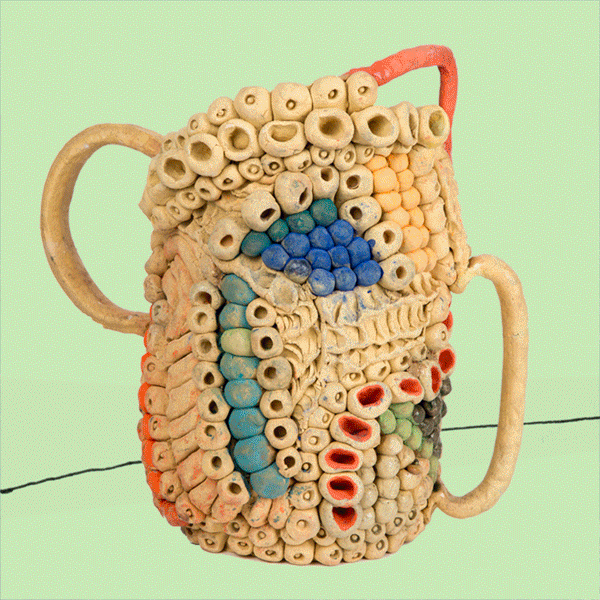JEWELED EARTH
New Work by Niki Ford and Jieun Reiner
August 19 - September 24 | Opening : August 19, 5-8pm
At first glance, the two bodies of work comprising Jeweled Earth appear conjured from dissonant worlds. Jieun Reiner’s lush, mosaic landscapes are mythic, historically resonant, and easily transposed onto the walls of a baroque temple or shrine. While Niki Ford’s vibrant biomorphic ceramics seem pulled from the depths of the sea like primordial relics encrusted in the sediments of time. But closer examination reveals the conditions under which they were formed to be remarkably similar. Both born of the earth, in subject or in substance, and shaped by the desire to manifest an internal tension in physical form, they enable the possibility of existing in the liminal space between nationalities, genders, and generations, between dreams and reality, past and present. Each painting and sculpture celebrates, interrogates, subverts, and renounces the multitude of identities and histories within each artist and reinforces the oft-overlooked truth that we are, each of us, more than one thing. Reiner’s crepuscular panoramas and enchanted still lifes imagine a new mythology comprised of allusions borrowed from her Korean and Hungarian heritage, her own multiracial experience, and an assemblage of oral histories, dreams, and memories. Butterfly Net Woven from Branches visualizes this process of entwining disparate strands to create a new whole capable of transcending the sum of its parts. Like the swallowtails, the swans imbue the compositions with motion, energy, and the possibility of transformation and metamorphosis. That each of the landscapes is portrayed during dusk or dawn with lambent horizon lines and sinking crescent moons acknowledges the temporal limits of the medium and reminds the viewer that even in this world, change is imminent. Situating the scenes at twilight, wherein the viewer cannot tell if the light is growing or shrinking, also underscores the artist’s talent for manipulating perception. The mirroring of the moon, the juxtaposition of the clay swan with its mammal counterpart, and the golden astral that flickers in form between a Lilly and a shooting star challenge the verisimilitude of the picture plane. An illusion that is perhaps most spectacular in Moonlight Sonata and Among My Swan, wherein half the scene appears not to be painted but mosaiced with glossy ceramic tiles affecting a haptic engagement with the image and the surface texture. For Ford, a queer, non-binary, multi-disciplinary artist and former professional chef, artmaking is both the exalted expression of a multitudinous self and the preceding exploration and integration. In this way, evidence of the process and production of each of the ceramics included in Jeweled Earth is preserved in the form as the form itself. The objects, spanning vessels and chairs, are bejeweled with biomorphic ornamentations and textures resembling barnacles, corals, sea anemones, lichen, mold, roots, feathers, fungi, flora, and fauna. Hovering between the aquatic and terrestrial, the geological and the ecological, the mammalian and the human, they’re both otherworldly and distinctly of this world. As with Reiner, Ford also engenders an experience of synesthesia wherein the viewer cannot help but feel the undulation of the densely clustered studs, nodules, bubbles, veins, corrugated ridges, and fossilized impressions. Constructed from an amalgamation of paper clay, stoneware, desert rock, mason stains, gouache, epoxy, and tung oil, the material evokes both congealed lava and swirled frosting. Other domestic textures and details, like the scalloped trim along companion plant and the kitsch teapot atop owls in the garden, charm and disorient in equal measure, animating the otherwise latent playfulness inherent to the undertaking. The formal tensions between the organic quality of the material and the distinctly human designs produce an uncanny sense that the objects are simultaneously natural specimens seething with life and inanimate artifacts from an ancient epoch. In other words, they are and are not both. –Tara Anne Dalbow







